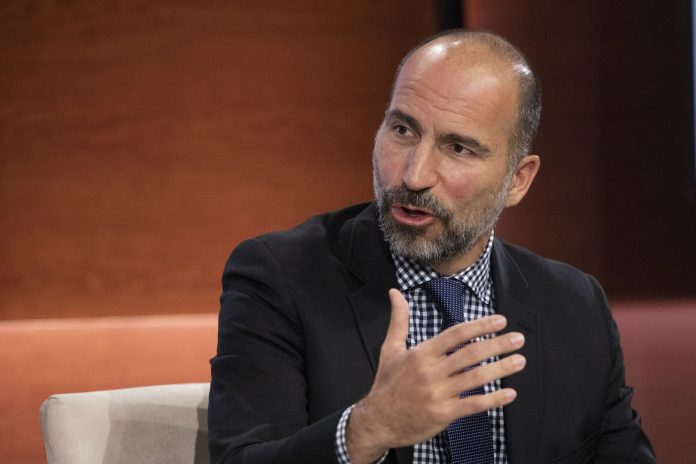
Uber is cramming more services into its ride-hailing app as it explores ways to generate more revenue and finally turn a profit.
The makeover announced Thursday includes force-feeding its food delivery service, “Eats,” into the Uber app that millions of people use to summon a ride. That means Uber users who don’t already have the “Eats” app may now be asked whether they want to order some food in the ride-hailing app.
Uber also will start making other changes to the ride-hailing app as part of its effort to create an “operating system for life,” according to company CEO Dara Khosrowshahi.
“This is a big change for us, but we, as a company, have never been afraid of big changes,” Khosrowshahi said.
Although Khosrowshahi didn’t mention it, Uber is under intensifying pressure to start making money. With the exception of when it has generated a windfall by selling a part of the company, Uber has done nothing but lose money since its inception, while also pioneering a way for people to easily find someone come pick them up at prices that undercut traditional taxis.
With its losses still mounting, Uber’s stock has plunged by nearly 30% since pricing its shares at $45 apiece when it became a publicly held company in May . The stock gained 8 cents to $31.76 in Thursday’s afternoon trading.
In an effort to reverse its losses, Uber has been gradually raising the cost of rides and becoming more aggressive it its attempts to plumb new sources of revenue. That has included food delivery and helping passengers find other means of transportation on bikes and scooters.
Uber Eats has proven popular, with revenue surging 80% during the first half of this year to $1.1 billion. But Uber remains mired in a morass of red ink, with losses of $6.2 billion during the first half of this year.
Most of that setback reflected nearly $4 billion in employee stock compensation that it had to record as part of its initial public offering, but even without that accounting expense, the San Francisco company still isn’t close to making money, much to the dismay of investors.
So, Uber will be rolling out a new menu of services in its ride-hailing app. It has already been testing the concept among some users in the U.S., Europe and Australia within the ride-hailing app’s map section, but now it will create a new gateway at the bottom of the app. Users of the ride-hailing app will get the new services feature, whether they want it or not, according to the company.
Eats will be included in the newly created menu, and at times Uber may ask a user if they want to order some food from a nearby restaurant participating in the service. Depending on user reaction, Uber may add other services, such as a supermarket delivering groceries.
In a recent research report, HSBC analyst Masha Kahn predicted Uber also could team up with department store chains, banks and digital subscription services with a variety of offers served up through the ride-hailing app.
Even if Uber is able to bring in more revenue with a new range of services, it still may face a long road to profitability. It still faces a number of concerns about the safety of its services, and California recently approved a new law that could force it to end its practice of classifying its drivers as independent contracts and treat them as full-time employees instead. That could require Uber to begin paying a variety of new benefits that would dramatically increase its expenses.q



















